What Is a Storage Area Network? SAN Explained
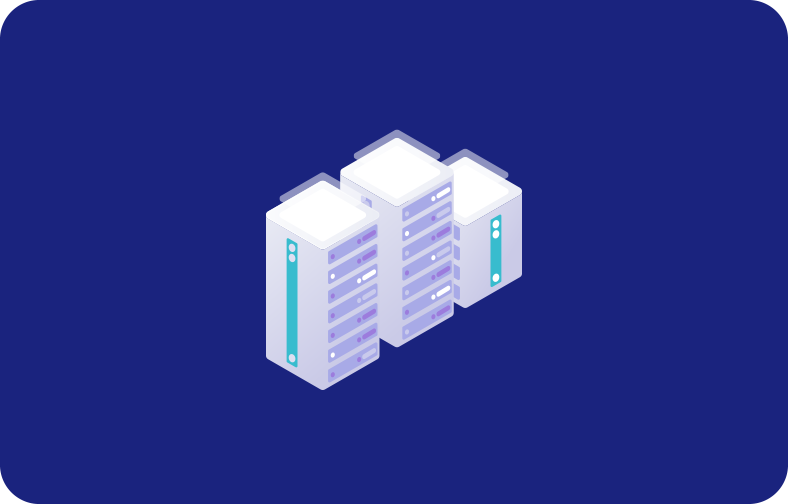
In the world of enterprise computing, the availability and accessibility of storage play a crucial role. While direct-attached disk setups have benefits, modern organizations require a higher level of organization, flexibility, and control over their storage resources. This need has driven the evolution of SANs.
A storage area network SAN is a specialized high-speed network or subnetwork that connects multiple servers to shared pools of storage devices. SANs emerged in the mid-1990s as a reliable solution for enterprises seeking high-speed, scalable block and file storage for critical workloads. Unlike Direct Attached Storage (DAS) and Network Attached Storage (NAS), SANs provide a network of storage devices, such as tape libraries and shared block storage, to multiple computing devices. This setup allows organizations to centralize their storage resources, enabling seamless management, replication, and data protection.
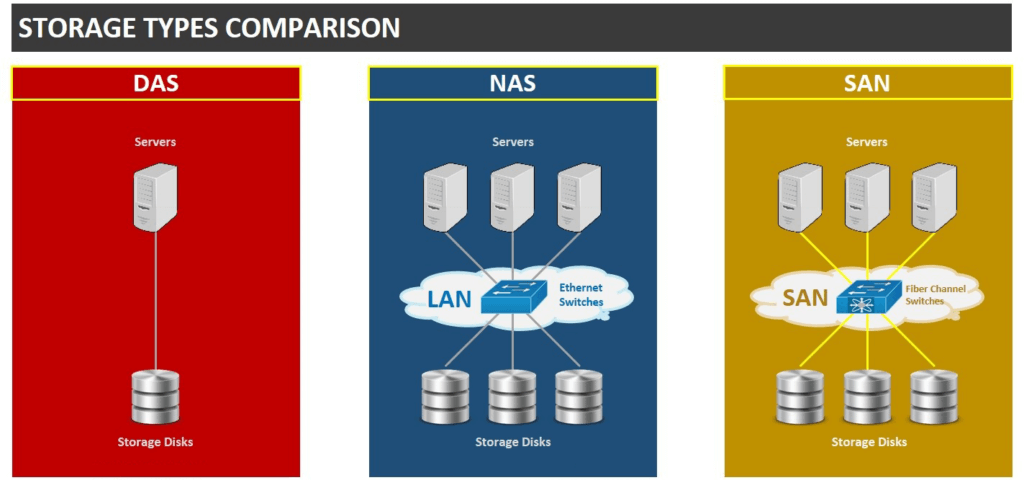
SAN technology empowers enterprises to treat storage as a unified resource, creating cohesive storage pools or object storage tiers. With features like data deduplication and RAID, SANs optimize storage capacity and greatly enhance data resilience compared to traditional direct-attached storage setups. By leveraging the capabilities of SANs, organizations gain greater control over their storage infrastructure, ensuring efficient data management and improved data protection.
The benefits of SANs extend beyond centralized storage. SANs provide high-performance storage networks everywhere, allowing servers to access storage resources with exceptional speed and reliability. Additionally, SANs can be seamlessly expanded and upgraded as the organization's storage needs evolve, providing scalability and future-proofing capabilities.
Setting up a Storage Area Network (SAN): A Step-by-Step Guide
To successfully set up a SAN, ensuring compatibility between hardware and software components is crucial. Here are the essential steps to follow:
Step 1: Assemble and connect all hardware components, ensuring they are properly cabled. Install the necessary software for each component.
Step 2: Verify the firmware versions, driver versions, and patch lists of the host bus adapters (HBAs), switches, and storage devices. Ensure they meet the vendor's compatibility requirements.
Step 3: Configure the HBA settings to establish communication between the servers and the SAN.
Step 4: Set up the storage array, configuring it to provide accessible and manageable storage resources for the SAN.
Step 5: Adjust configuration settings, such as network or access controls, to optimize the SAN's performance and security.
Step 6: Test the integration of all components to ensure they work together seamlessly. This includes conducting tests for normal production processing, failure mode scenarios, and backup and recovery processes.
Step 7: Evaluate and establish a performance baseline for each component within the SAN and the overall SAN performance. This baseline serves as a reference for future performance monitoring and optimization.
Step 8: Thoroughly document the entire SAN installation process and operational procedures. This documentation will be invaluable for troubleshooting, maintenance, and future expansion of the SAN.
How a Storage Area Network (SAN) Works
A Storage Area Network SAN is a specialized network designed to connect servers and storage devices. Its main purpose is to centralize storage resources, making managing and protecting data convenient. It utilizes block-based storage and high-speed architecture to establish connections between servers and logical disk units (LUNs). These LUNs represent a specific range of block storage derived from a shared storage pool, effectively presenting themselves to the server as logical disks.
Traditionally, servers had their storage capabilities, with hard drives and other storage devices installed directly within them. However, as data storage needs grew, it became more efficient to separate data storage devices from individual servers and bring them together in a centralized location. This is where storage area networks SANs come into play.
SANs use a separate storage network, distinct from the regular Local Area Network (LAN) that connects computers and devices in an office or home. SANs can optimize performance and ensure that data flows smoothly between servers and storage devices by having a dedicated network for storage traffic.
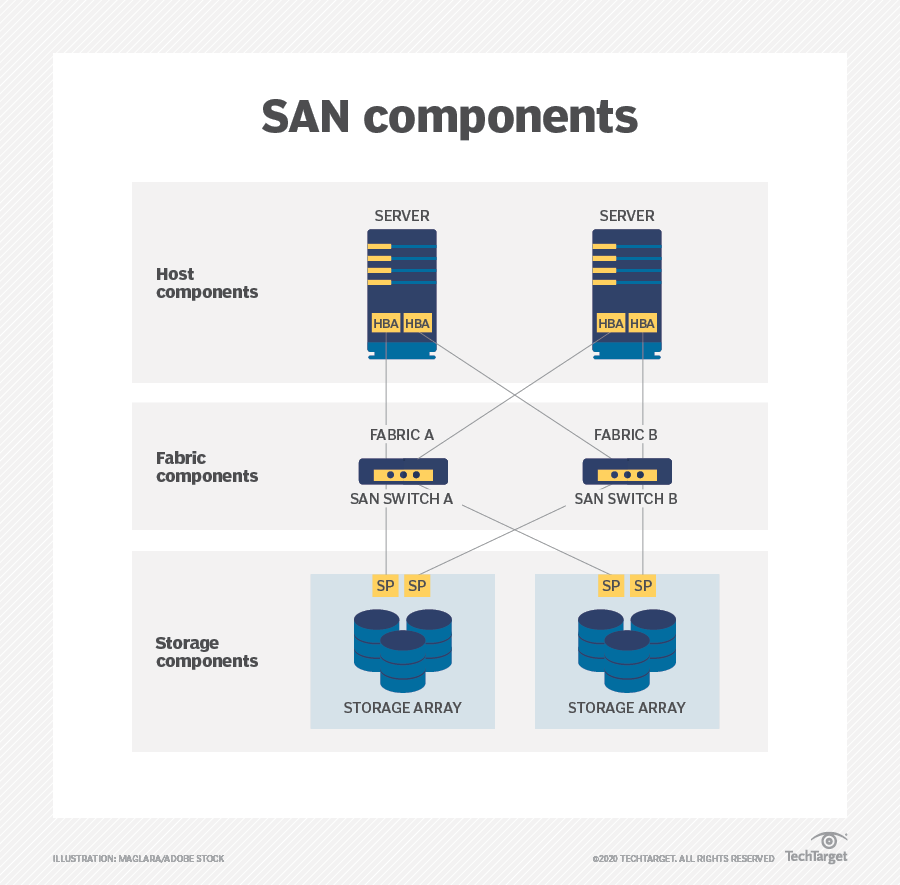
There are three main components or layers in a SAN: the host layer, the fabric layer, and the storage layer.
The host layer
The host layer consists of the servers that are connected to the SAN. These servers run various applications and workloads, such as databases or virtual machines, and require access to storage resources. SAN hosts incorporate a special network adapter - a host bus adapter (HBA) to facilitate this. This adapter allows the server to communicate with the SAN and access the same storage device resources. It's like a translator between the server and the storage devices.
The fabric layer
The fabric layer represents the network infrastructure of the SAN. It includes switches, routers, and other networking devices connecting the servers and storage devices. The fabric layer ensures data flow between the servers and storage and san networking devices efficiently and securely. It's like the road system that enables smooth data transportation within the SAN.
The storage layer
Finally, we have the storage layer. This layer consists of the storage devices, such as hard drives, solid-state drives (SSDs), and tape drives. These storage devices are collected into pools or groups and organized to maximize the storage system's capacity and reliability. The storage layer provides the space where data is stored and retrieved by the servers connected to the SAN.
By centralizing storage resources in a SAN, organizations can better manage their data, protect it from loss or damage, increase storage capacity, and improve overall performance. SANs enable faster access to large amounts of storage, allowing enterprise workloads to run smoothly without competing for network bandwidth.
Different Ways to Access a SAN
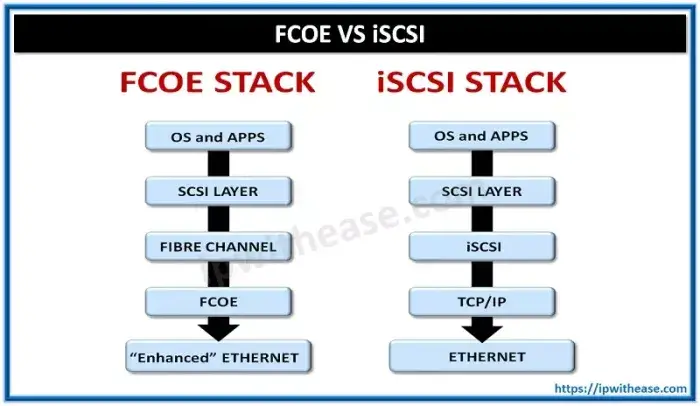
Accessing a Storage Area Network (SAN) can be achieved through various protocols. The three most common methods are Fibre Channel Protocol (FCP), Internet Small Computer Systems Interface (iSCSI), and Fibre Channel over Ethernet (FCoE).
Fibre Channel Protocol (FCP)
FCP is the widely adopted protocol for SAN access. It utilizes SCSI commands and operates over a Fiber Channel (FC) connection. This protocol enables data transmission between storage devices, servers, switches, and data centers. FC offers high-speed networking capabilities, supporting up to 16 gigabits per second. It can use optical or copper media, allowing for connectivity over distances of up to 10 kilometers. FCP is known for its enhanced security compared to TCP/IP, making it less vulnerable to malware and human errors.
Internet Small Computer Systems Interface (iSCSI)
iSCSI is a block-level protocol that facilitates the transportation of SCSI packets over a TCP/IP network. Similar to FCP, it provides access to block-level storage. However, iSCSI utilizes conventional Ethernet networks instead of Fiber Channel. By using an operating system called the Transport Control Protocol (TCP), iSCSI enables the transmission of SCSI commands over the internet, Local Area Networks (LANs), and Wide Area Networks (WANs). It offers a flexible and cost-effective solution for SAN connectivity.
Fibre Channel over Ethernet (FCoE)
FCoE takes a unique approach by combining Fibre Channel and Ethernet technologies. It encapsulates Fibre Channel packets within Ethernet packets, allowing them to traverse Ethernet networks. FCoE requires specialized FCoE-enabled switches and adapters that combine the functionalities of FC Host Bus Adapters (HBA) with an Ethernet network adapter. This protocol is particularly useful in scenarios where higher-performance networks are required. It offers an alternative to standard Fibre Channel connectivity, leveraging the benefits of Ethernet infrastructure.
By leveraging these different protocols, organizations can choose the most suitable method for accessing their SAN, depending on factors such as performance requirements, infrastructure capabilities, and cost considerations.
Comprehending SAN Switches
The SAN switch is its central component in any Storage Area Network (SAN). Operating similarly to other network switches, the SAN receives data packets, determines their source and destination, and then forwards them to the intended devices. The SAN fabric's structure is determined by factors such as the number and type of switches used, including backbone switches, modular switches, or edge switches, as well as the interconnections between these switches. Smaller SANs may utilize modular switches with 16, 24, or 32 ports, while larger SANs often rely on backbone switches with 64 or 128 ports. Combining SAN switches allows highly complex SAN fabrics to be created, connecting thousands of servers and storage devices.
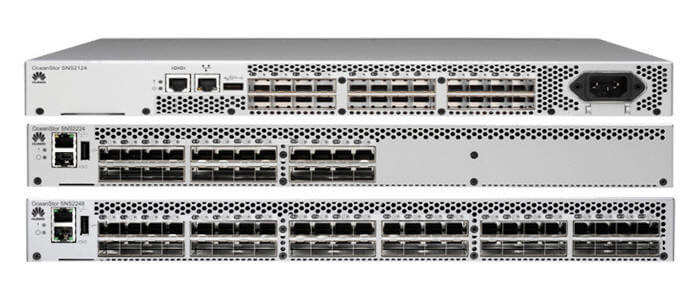
It's important to note that a robust SAN fabric alone does not guarantee storage resilience. Storage systems must incorporate various internal technologies to ensure reliable performance. These technologies include RAID for increased capacity and fault tolerance through disk grouping and advanced error handling and self-healing capabilities. Additionally, storage systems often implement thin provisioning, snapshots or storage cloning, data deduplication, and data compression to optimize storage utilization. While a well-designed SAN fabric allows any host to access any storage device, isolation techniques like zoning and LUN masking can restrict host access to specific LUNs, improving storage performance and enhancing security across the SAN.
When to consider using SAN storage?
SAN storage is particularly well-suited for two specific scenarios:
Database Management
Storage area networks SANs excel in handling the demanding requirements of large enterprise databases in high-speed transactional environments. These databases often contain critical data that necessitates optimal performance and availability.
SANs leverage Fibre Channel technology, which offers exceptional throughput speeds of up to 128 Gbps. This enables SANs to meet enterprise databases' stringent I/O processing and low-latency needs. Additionally, SANs support features like parallel processing, RAID, and hot-swappable drives, enhancing data management cloud storage capabilities.
Virtualization
SANs are highly suitable for large-scale virtualization deployments that run diverse operating systems and applications. A SAN enables the rapid and efficient transfer of multiple I/O streams between virtual machines and virtualization hosts in virtual environments.
The scalability and flexibility provided by SANs are crucial for accommodating the dynamic nature of virtualized environments. SANs can seamlessly support various operating systems, applications, and virtualization technologies, ensuring compatibility and adaptability. Moreover, SANs offer the reliability required to prevent failures that could lead to multiple application outages in virtualized environments.
Advantages of SAN
Enhanced Performance: A SAN's dedicated network fabric ensures high-performance data transfer between storage devices, servers, and data centers.
Scalability and Flexibility: SANs can easily accommodate large-scale deployments, allowing organizations to scale their storage infrastructure according to their needs.
Robust Availability: SANs eliminate single points of failure and provide continuous access to data through redundant paths and failover mechanisms.
Advanced Management Capabilities: SANs offer centralized management and a range of features like data encryption, deduplication, replication, and self-healing technologies to optimize storage capacity, security, and data resilience.
Disadvantages of SAN
Complex Implementation: Traditional SANs require separate network infrastructures, dedicated hardware components, and complex configurations, which can be challenging to design, implement, and manage.
Suitability for Larger Environments: SANs are more effective in larger and more complex environments due to their associated costs and complexity. Smaller deployments may find alternatives like iSCSI SANs, converged SANs, or HCI deployments more suitable.
Management Complexity: SAN management involves configuring various features and ensuring compliance, DR, and BC requirements, which can be time-consuming and challenging, particularly for organizations with limited IT resources.
Is SAN storage a reliable backup option?
SAN storage offers several advantages that make it an excellent choice for backups:
Centralized Backup: With SANs, you can consolidate backups from multiple servers into a single location. This centralization simplifies backup management and ensures efficient use of storage resources.
Scalability: SANs provide the flexibility to scale storage capacity as needed. As your backup requirements grow, you can easily expand the SAN infrastructure without disrupting existing backups or compromising performance.
Faster Backups: SAN solutions enable faster backups by allowing servers to back data to the SAN directly. This eliminates data needing to traverse the LAN, resulting in quicker backup operations. LAN congestion or high network traffic will not impact the backup process.
High Availability: SAN clusters offer built-in redundancy and failover capabilities. In case of a server failure, the workload seamlessly shifts to another server in the SAN, ensuring continuous backup operations. Data replication to an offsite SAN also enhances disaster recovery capabilities, safeguarding your backups against site-level disasters.
Enhanced Resilience: SAN is designed with redundant network paths, ensuring continuous access to storage even if a network disruption occurs. If one path is compromised, data traffic can be automatically redirected through an alternate path, reducing the risk of storage inaccessibility due to a single device failure.
Frequently Asked Questions
What is a SAN (Storage Area Network)?
A Storage Area Network (SAN) is a dedicated high-speed network that connects multiple servers to disk arrays and shared storage devices, allowing for centralized storage management and increased data accessibility.
How does a SAN differ from local storage?
Unlike local storage, which is directly attached to individual servers, a SAN provides a separate network infrastructure solely dedicated to storage. This allows centralized management, shared access to storage resources, and improved scalability and performance.
What are the advantages of using a SAN?
Some benefits of using a SAN include enhanced storage performance, scalability to accommodate growing data needs, high availability and fault tolerance, centralized management and control, and consolidating storage resources for cost savings.
What types of organizations benefit from implementing a SAN?
Storage area networks SANs benefit a wide range of organizations, particularly those with large data storage requirements, high-performance computing needs, virtualized environments, database-intensive applications, and mission-critical workloads.
What are the primary components of a SAN?
A SAN typically consists of host servers, storage arrays, switches, and host bus adapters (HBAs). The host servers connect to the storage arrays through the switches using HBAs, forming the infrastructure for data transfer and storage management.
Can a SAN be used for backup and disaster recovery?
Yes, SANs can be utilized for backup and disaster recovery purposes. They offer centralized storage management, allowing organizations to consolidate backups from multiple servers to a single location. Replication to offsite SANs can also facilitate disaster recovery efforts.
What are the connectivity options for SANs?
SANs commonly use Fibre Channel (FC) or iSCSI (Internet Small Computer Systems Interface) as connectivity options. Fibre Channel provides high-speed, low-latency performance, while iSCSI leverages existing Ethernet networks for more cost-effective connectivity.
Are SANs compatible with virtualization?
Yes, SANs are highly compatible with virtualization technologies. They provide the necessary storage infrastructure and scalability to support virtual machines and their associated storage requirements in virtualized environments.
How do SANs ensure data security?
SANs offer various security measures, such as zoning and LUN masking, to control access and prevent unauthorized access to stored data. Additionally, encryption technologies can be implemented to protect and store data in transit and at rest within the SAN.
What are the considerations when implementing a SAN?
When implementing a SAN, factors to consider include the specific storage requirements of the organization, scalability needs, compatibility with existing infrastructure, budget constraints, data protection and security requirements, and the expertise and resources available for SAN management and administration.








.png)


